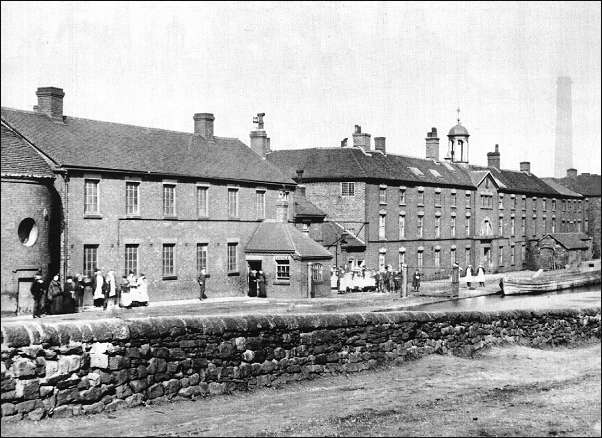Etruria Works, Etruria, Hanley
Opened officially by Josiah Wedgwood I, and
celebrated by the throwing of six ‘First Day’s’ Vases, on 13th
June 1769, the land on which the factory was built, known as the
Ridgehouse Estate, had been originally purchased by Josiah in 1767
for the sum of three thousand pounds.
The estate comprised some three
hundred and fifty acres, and Wedgwood was particularly anxious to
purchase it because he knew that it lay directly in the path of
the proposed Trent and Mersey Canal. The motto of the factory (one
which appeared on the First Day’s Vases), was ‘Artes Etruriae
Renascuntur’ - literally, ‘The Arts of Etruria are reborn’.
The name ‘Etruria’ actually derives from an area
of central Italy, originally inhabited by the Etrusci. The
Etruscans were a highly civilised people who produced splendid
works of art which were greatly admired in the 18th century.

The Etruria Works on the Trent &
Mersey canal

From about 1900 onwards the factory suffered
greatly from subsidence because of the presence of extensive mining
operations.
Lord Granville
owned coal mines which extended under, among many other areas,
Shelton and Etruria. When mining for coal supports were left to
try to prevent collapse of the mine.
Around 1833
Granville stared to mine for iron-ore. The method and economics of
iron-ore mining meant that no support was left and consequently
large scale damage was done to houses above some of the workings.
In 1936, because of the continuing subsidence and
the pollution from the vast Shelton Steelworks the Wedgwood family
purchased a 382 acre estate located near the village of Barlaston
for the site of a new factory.
The foundation stone was laid on 10 September
1938, earthenware production was transferred from the old Etruria
site in 1940, with production officially ending at Etruria on 13
June 1950.
![]()
![]()
![]()
![]()
![]()
![]()